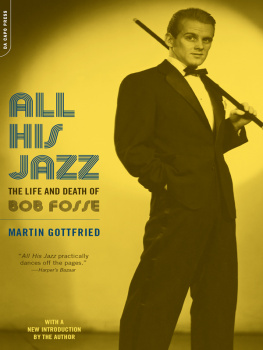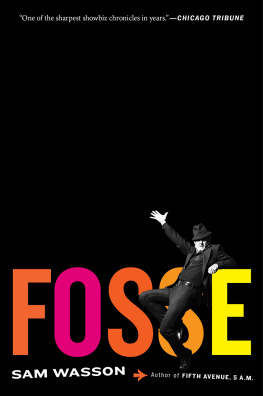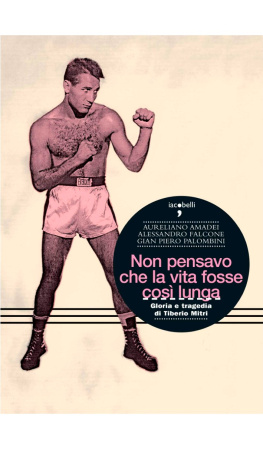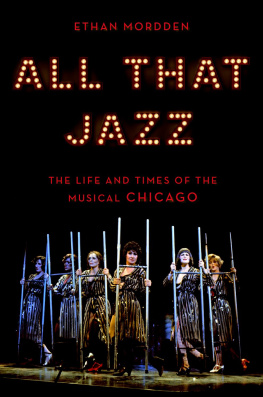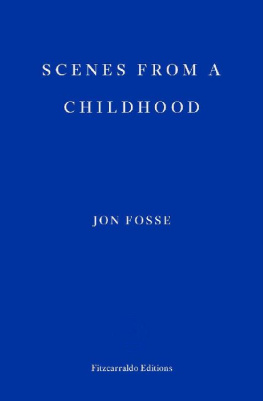ALL
HIS
JAZZ
THE LIFE & DEATH
OF BOB FOSSE
MARTIN
GOTTFRIED

Copyright 1990 by Martin Gottfried
All rights reserved. No part of this publication may be reproduced, stored in a retrieval system,
or transmitted, in any form or by any means, electronic, mechanical, photocopying,
recording, or otherwise, without the prior written permission of the publisher. Printed in
the United States of America.
Designed by Maria Carella
Cataloging-in-Publication data for this book is available from the Library of Congress.
A Secretary Is Not a Toy, Frank Loesser. 1961, 1962, Frank Music Corp. renewed
1989, 1990, Frank Music Corp. International Copyright Secured. All Rights Reserved.
Used By Permission. Bye, Bye, Love, by Felice and Boudleaux Bryant. 1957, House of
Bryant. All Rights Reserved. Used By Permission. Cabaret, by Fred Ebb and John Kander.
1996, Alley Music and Trio Music Co., Inc. All rights administered by Hudson Bay
Music Inc. All Rights Reserved. Used By Permission. Call Me Mister, by Harold Rome.
1977, 1978 by Unichappell Music, Inc. All Rights Reserved. Used By Permission. Hey
Big Spender, by Dorothy Fields and Cy Coleman. Copyright 1966, 1969, Notable Music
Co., Inc. All Rights Reserved. Used By Permission. Lafayette, We Are Here, by Carolyn
Leigh and Cy Coleman. 1962 by Edward H. Morris and Co., assigned to Unichappell
Music, Inc. All Rights Reserved. Used By Permission. Pippin, by Stephen Schwartz.
1972 by Jobete and Gray Dog Music. All Rights Reserved. Used By Permission. Razzle
Dazzle, by Fred Ebb and John Kander 1977, 1978 Unichappell Music, Inc. and Kander-Ebb,
Inc. All Rights Reserved. Used By Permission. Real Live Girl, by Carolyn Leigh
and Cy Coleman. 1969 by Notable Music Co., Inc. All Rights Reserved. Used By Permission.
Snakes in the Grass, by Alan Jay Lerner and Frederick Loewe. 1974 by Famous
Music Corporation. All Rights Reserved. Used By Permission. Two Ladies, by Fred
Ebb and John Kander. 1966 Alley Music and Trio Music Co., Inc. All rights administered
by Hudson Bay Music Inc. All Rights Reserved. Used By Permission. Whos Got the
Pain? by Richard Adler and Jerry Ross. 1955, 1957 Frank Music Corp. renewed 1983
Richard Adler Music and J & J Ross Company. All rights administered by The Songwriters
Guild of America, 276 Fifth Avenue, New York, NY 10019.
First Da Capo Press edition 1998
Second Da Capo Press edition 2003
This Da Capo Press paperback edition of All His Jazz is an unabridged republication of
the edition first published in New York in 1990, with one minor textual emendation and
the addition of a new introduction by the author. It is reprinted by arrangement with the
author.
ISBN-10: 0-306-81284-3 ISBN-13: 978-0-306-81284-2
eBook ISBN: 9780786730223
Published by Da Capo Press
A Member of the Perseus Books Group
http://www.dacapopress.com
Da Capo Press books are available at special discounts for bulk purchases in the U.S. by
corporations, institutions, and other organizations. For more information, please contact
the Special Markets Department at the Perseus Books Group, 11 Cambridge Center,
Cambridge, MA 02142, or call (800) 2551514 or (617) 2525298, or e-mail
.
THIS IS FOR MY FRIENDS.
It is for Michael Alpert, Joan Brandt, Samantha Dean, Cy and Posy Feuer, Clive Hirschhorn, Janice Levin, Dottie Schott, Jerry and Jean Wexler, and my own personal social worker, Stephanie Sacks.
M y life is an open pamphlet.
BOB FOSSE
THE CHICAGO MANS LIFE AFTER DEATH
Bob Fosse would have loved it. Decades after his death, this cynical and mordant man in black had the first blockbuster hit of his life. The hit, moreover, was a revival of Chicago, a stage musical that he had never wanted to do in the first place and had done only as a guilty favor for the wife he loved but had forsakenGwen Verdon. It was also a show he had staged in a mood even blacker than his usual, for he was suffering post-operative depression after open-heart surgery. In that respect, at least, the tough and ironic Chicago was a pure expression of this profoundly talented, self-loathing, and brutally morbid song and dance man.
When first produced in 1975, Chicago received mixed reviews and barely eked out a two-year run. Twenty years later Broadway, once the proud birthplace of American musical theater, had become its mausoleum. Yet even as producers were scavenging for old shows to revise, Chicago was deemed worthy of only a four-performance staging in a New York series called Encores! Great Musicals in Concert.
With the plays opening number, however, audiences were electrified. Stripped of scenery and performed with actors in black costumes before an on-stage orchestra, Chicago was set free to bare its nasty power. Indeed, the production provided a split picture of Fosse. One revealed his self-image in the bitterly trashy, show business glitter of Chicago as first produced. The other picture reflected Bob Fosse as Ann Reinking chose to see him, a touch-up that presented her late lover and dance master as choreographing for her alone.
Gwen Verdon had been the original model for Bob Fosses choreography. He designed dances especially for her in shows like Redhead, Damn Yankees, and Sweet Charity. Reinking, who succeeded her as his mistress (he never divorced Verdon), was also her replacement as dance model. He used Reinkings body to perfect the grinding, swivel-hipped style that evolved in the 1972 Pippin and the 1979 movie All That Jazz.
By then, however, Bob Fosses enthusiasm for dance numbers had waned. Indeed, even as early as 1966s Sweet Charity he was showing greater interest in musical staging than in choreography. That shows Hey, Big Spender, for instance, is usually taken for a dance number when in fact it has no dance steps. Such choreographic direction culminated in Fosses brilliant film Cabaret, with its thorough line of musical stagingand no dance numbers at all.
Such a development had to be painful for a dancer like Reinking, but she tried to have the last word. Nine years after Fosses death, when she was engaged to play Roxie Hart in the 1996 concert version of Chicago a show that he had made virtually dancelessReinking revised history by creating additional choreography in the style of Bob Fosse. That translated as a mimicry of the style he had suited to her, and it resulted in a choreography of clichespelvic grinds, tipped derbies, and Fosse lookalikesoften effective but inevitably repetitive and ultimately a travesty of the original style.
The damage was not crucial and the concert version of Chicago, with its wonderful overall direction by Walter Bobbie, went on to spectacular and deserved success. Even after the release of Chicago, the movie that won the 2002 Academy Award, the Broadway revival remained popular, continuing into an eighth year. Indeed, it was only the enormously successful revival of the stage show that finally made the movie of Chicago possible. It was a movie twenty years not in the making but in the failing to make casting proposals over the years ranged from Goldie Hawn to Bette Midler, from Kevin Kline to Kevin Spacey, and from Madonna to Britney Spears. Meanwhile, Fosse had been treated to yet a second posthumous hit.

